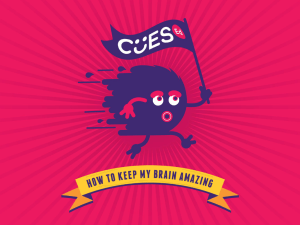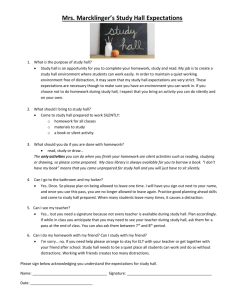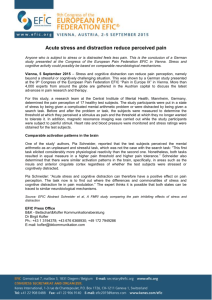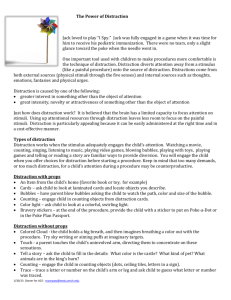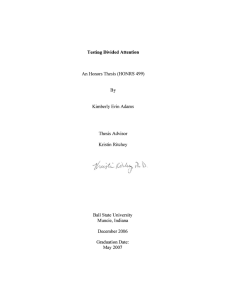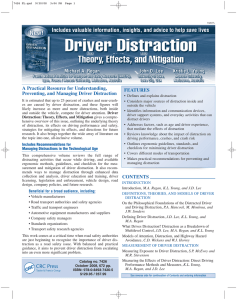Title: The Relationship Between Sympathetic Yawning and
advertisement
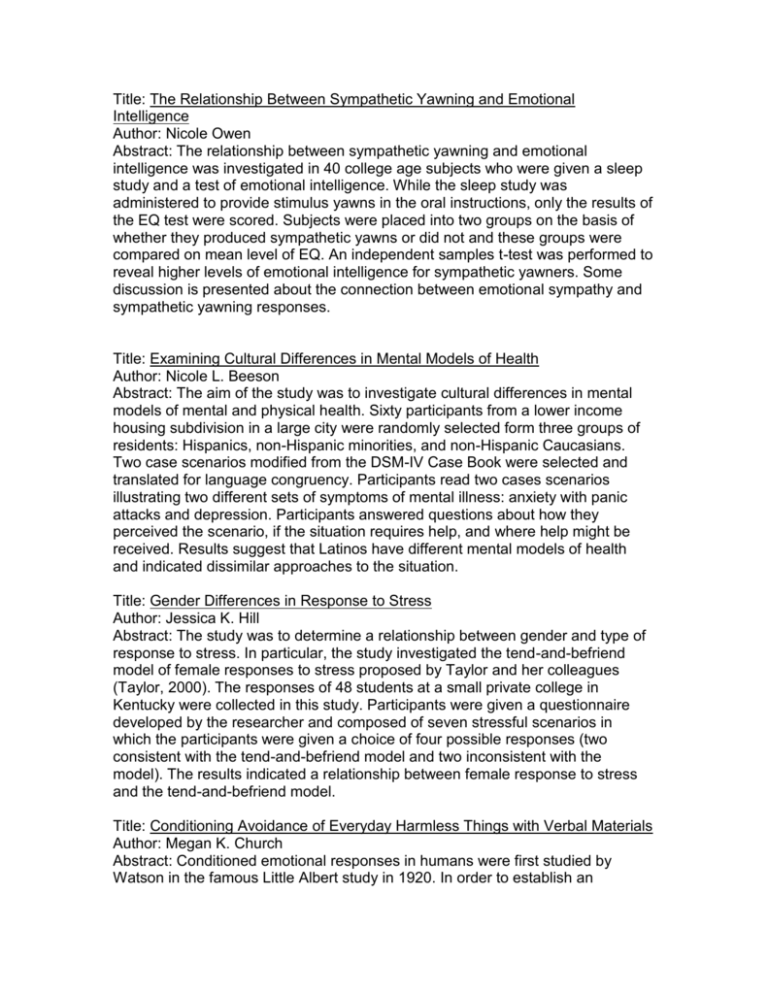
Title: The Relationship Between Sympathetic Yawning and Emotional Intelligence Author: Nicole Owen Abstract: The relationship between sympathetic yawning and emotional intelligence was investigated in 40 college age subjects who were given a sleep study and a test of emotional intelligence. While the sleep study was administered to provide stimulus yawns in the oral instructions, only the results of the EQ test were scored. Subjects were placed into two groups on the basis of whether they produced sympathetic yawns or did not and these groups were compared on mean level of EQ. An independent samples t-test was performed to reveal higher levels of emotional intelligence for sympathetic yawners. Some discussion is presented about the connection between emotional sympathy and sympathetic yawning responses. Title: Examining Cultural Differences in Mental Models of Health Author: Nicole L. Beeson Abstract: The aim of the study was to investigate cultural differences in mental models of mental and physical health. Sixty participants from a lower income housing subdivision in a large city were randomly selected form three groups of residents: Hispanics, non-Hispanic minorities, and non-Hispanic Caucasians. Two case scenarios modified from the DSM-IV Case Book were selected and translated for language congruency. Participants read two cases scenarios illustrating two different sets of symptoms of mental illness: anxiety with panic attacks and depression. Participants answered questions about how they perceived the scenario, if the situation requires help, and where help might be received. Results suggest that Latinos have different mental models of health and indicated dissimilar approaches to the situation. Title: Gender Differences in Response to Stress Author: Jessica K. Hill Abstract: The study was to determine a relationship between gender and type of response to stress. In particular, the study investigated the tend-and-befriend model of female responses to stress proposed by Taylor and her colleagues (Taylor, 2000). The responses of 48 students at a small private college in Kentucky were collected in this study. Participants were given a questionnaire developed by the researcher and composed of seven stressful scenarios in which the participants were given a choice of four possible responses (two consistent with the tend-and-befriend model and two inconsistent with the model). The results indicated a relationship between female response to stress and the tend-and-befriend model. Title: Conditioning Avoidance of Everyday Harmless Things with Verbal Materials Author: Megan K. Church Abstract: Conditioned emotional responses in humans were first studied by Watson in the famous Little Albert study in 1920. In order to establish an avoidance response in the present study, subjects read 3 short stories about a paperclip, ballpoint pen, and a mechanical pencil that served as symbolic aversive stimuli. The control group read 3 non-aversive stories. A recall task was then performed for which subjects could choose to use the objects about which they read. Chi-Square analysis revealed that the feared objects were chosen significantly less by subjects who read two of the three aversive stories than subjects who read the non-aversive stories. Title: The Importance of Positive Distraction as a Component of Attentional Focus Author: Vitalis A. Lanshima Abstract : Many sports psychologists seek informative relationships between cognition and performance, especially in regard to attention, arousal, anxiety, and distraction. This study examined the relationship between positive distraction and performance to investigate how distractibility can lead to significant increases in performance. A total of 20 student- athletes from a small private university in Kentucky completed a distraction assessment before exercise, and were then randomly assigned to different groups based on their exercise experience. Subject’s ability to maintain a high level of performance with and without environmental distraction cues was measured, and a post test was administered to ascertain the subject’s use of distraction to determine if distractions have a positive effect on athlete’s performance, determination, and drive. The results of the study suggest, contrary to popular views, that the use of positive distraction is beneficial for enhancing athletic performance.
